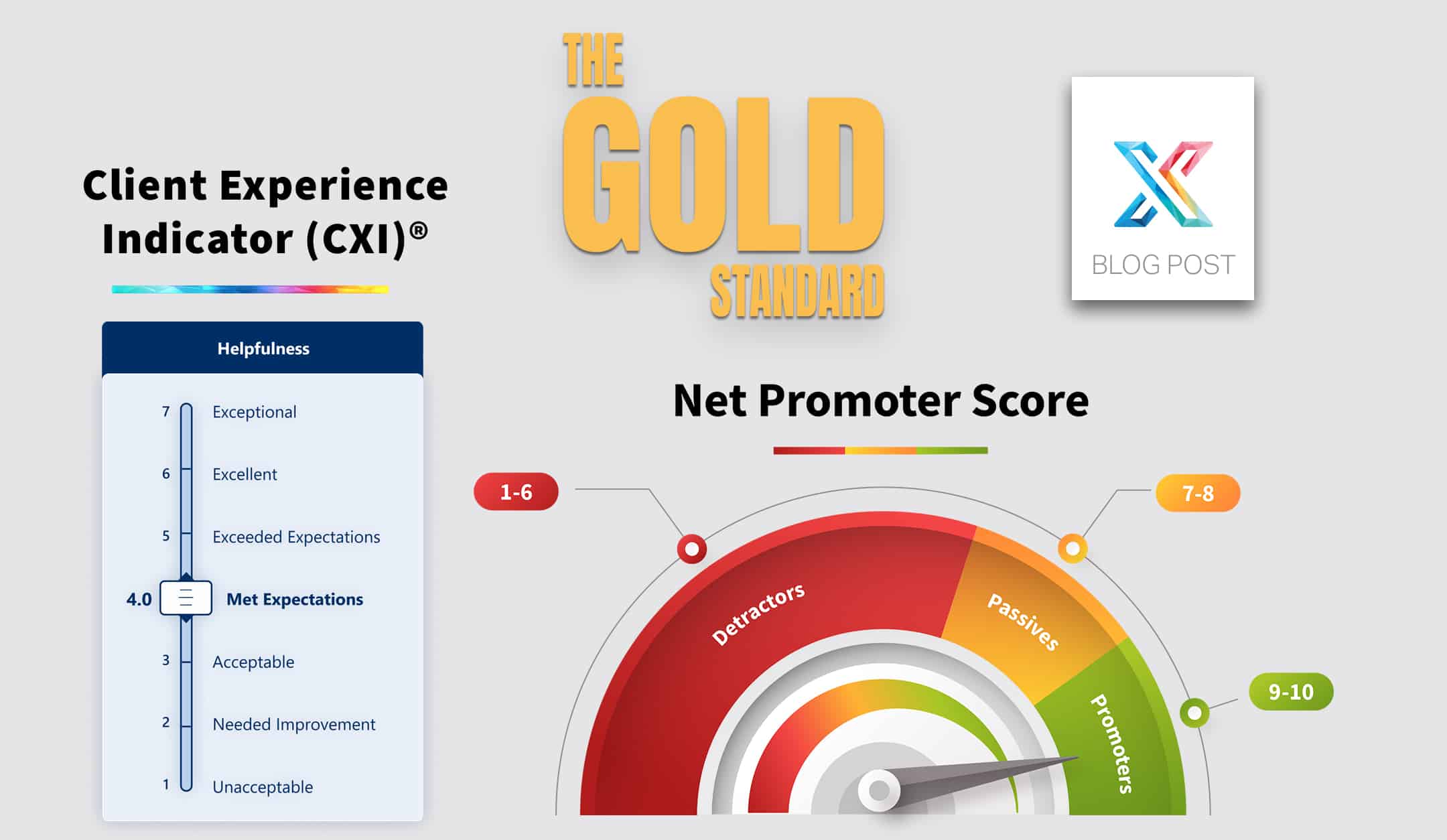We recently received a great question from a client:
"We wondered how common it was to have client feedback responses with mostly 'met expectations' scores while providing a high NPS score of 9 or 10. We have plenty of examples, like our client Jeanne. Her scores range from 3.9 to 5.3, but she gave us a 10 NPS. Just curious if you’ve seen these types of behaviors in other surveys with other clients."
Short answer: Yes, and it's actually what we aim for. This is the design intention behind our dual-scale feedback methodology—Net Promoter Score (NPS) and Client Experience Indicator (CXI). Let’s unpack why this pairing offers the most powerful insight you can get from your client feedback.
NPS as the Destination, CXI as the Map
As we explained in our blog post “Why Net Promoter Score Alone Falls Short for Measuring Client Experience in AEC Firms,” the two scales serve different but complementary purposes:
- NPS is a destination metric that tells you whether the client views you as their provider of choice.
- CXI is a calibration metric that tells you how your actual delivery aligns with that client’s expectations.
CXI is scored on a 1-to-7 scale that is centered at 4.0 (Met Expectations). That means a score of 4.0 is not bad—it's ideal. That client had an expectation, and you met it. Job well done.
NPS, by contrast, is a top-box metric. The goal is a 9 or 10. It answers a different question: "Would you recommend us to others?" A 10 means they absolutely would—you are their go-to.
So what happens when someone gives you a 10 NPS and 4.0 CXI scores? They had high expectations and you met them. That’s not just good—it’s perfect.
An Analogy: Ritz Carlton vs. Motel 6
Let’s say I’m staying at a Ritz Carlton. I have very high expectations going in. If they meet them, I’ll give CXI scores of 4.0 (Met Expectations) and an NPS of 10. But if something small is off, I’ll still give them a 10 NPS—I love the brand—but my CXI might drop to a 3.8 or 3.9. They didn’t quite hit the bar this time.
Now switch it up. I stay at a Motel 6. My expectations are lower. If they deliver a clean, quiet, comfortable room, I might give CXI scores of 6 or even 7. They exceeded my expectations! I might give them an NPS of 7 or 8. Not quite a promoter, but I’m satisfied and surprised.
What happens over time? If Motel 6 keeps delivering at that level, my expectations rise. CXI scores trend down toward 4.0. NPS might rise to 9 or 10. The experience didn’t get worse—it got consistent.
How to Use These Insights
Let’s go back to Jeanne, your client. Her CXI scores hover near 4.0. Her NPS is a 10. That means:
- She has high expectations.
- You consistently meet them.
- She sees you as her provider of choice.
This is not a gap or a red flag. It’s a success story.
But here’s where it gets interesting. Next time Jeanne fills out the survey, what if one of her CXI scores jumps into the 5 or 6 range? That means you exceeded her expectations in that area. Now you have a moment of truth:
- What did you do differently?
- Can you repeat it?
- Should you repeat it?
Sometimes, that spike means you created new value. Maybe it’s worth a conversation about capturing that value—through additional scope, a new service, or higher fees. Other times, it may signal over-delivery—a sign you went beyond scope or invested extra hours without compensation.
This is where the CXI scores shine. NPS doesn’t change—you were already a 10. But CXI gives you real-time intelligence about what your clients notice, what they value, and how your performance aligns with expectations.
Surveys Aren't the End, They're the Beginning
The real value of electronic feedback lies in what happens next. Survey results should guide follow-up conversations—not replace them.
Rather than starting a conversation with a vague question, the feedback gives you a head start. You’re able to say, “We saw your feedback on communication during the pre-construction phase. Let’s talk more about how we can improve that moving forward.” Or, “You mentioned we exceeded expectations on schedule. We’d love to understand what made the biggest impact.”
This changes the dynamic entirely. It turns the conversation from abstract to actionable. From assumption to clarity. From “Are there any issues?” to “Let’s talk about what you’ve already shared.”
And it builds trust—because your client sees that you’re listening and, more importantly, that you’re acting on what you’ve heard.
In Summary
- A CXI score of 4.0 is not neutral—it’s excellent. It means you met expectations.
- An NPS of 10 means you're the provider of choice.
- When those happen together, it's the gold standard!
Your goal isn’t to always exceed expectations. It’s to consistently meet them. Exceeding expectations occasionally is what creates surprise and delight. Doing it every time simply sets a new, higher bar—and risks creating an unsustainable norm. This idea is central to our thinking on elevating expectations: over time, exceptional service can redefine what clients consider "standard." That’s why it’s so important to be intentional about how, when, and why you aim to go above and beyond.
So yes—clients like Jeanne are exactly what you want. High NPS, met expectations. That’s the sweet spot.
Want to learn more about how NPS and CXI work together? Download our whitepaper, "Getting Started with Client Feedback", or reach out for a conversation. We love talking about this stuff.





